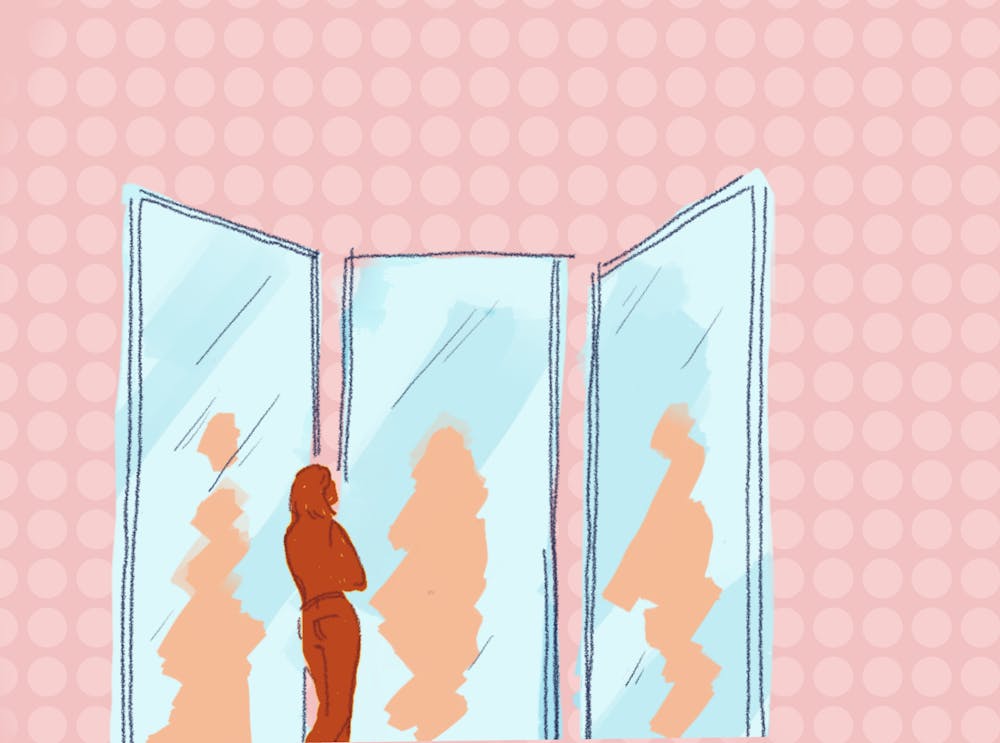Glass skin and perfectly–toned bodies have become the standard for beauty on social media. Either you are beautiful and hot because you look like an Instagram influencer or you’re unattractive because you don’t. No doubt influencers and celebrities are incredibly beautiful and handsome, but edited photos and plastic surgery can set unrealistic standards for young people with insecurities about their own bodies and appearance. The #bodypositivity movement has attempted to resolve these issues—but it isn’t enough.
Instead of focusing on whether or not a body is attractive, we should just call our body what it is: just a body, with no regard for whether or not it's attractive.
Social media beauty standards—very thin women and very muscular men—can be disastrous for youth body image during puberty. The International Journal of Eating Disorders published a study that found a strong correlation between adolescent’s social media usage with 51.7% of girls and 45% of boys engaging in eating disorder behavior such as skipping meals or strict exercise. The more time on social media, the greater the effect of body dysmorphia, a body–image disorder focused on imagined flaws in your appearance. In the case of social media, the perceived flaws are mostly concerned with being overweight, but other factors can also contribute to body dysmorphia like the shame of having darker skin, ethnic features, or a disability.
To push back against the single narrative of beauty and attractiveness that was mostly thin, white, and able–bodied, the body positivity movement took hold on social media. People post photos showing their stomach relaxed versus posed and more plus–size models post images with captions that read “we are all beautiful,' reminding us all to find beauty in something that's really just a vessel.
But the body positivity movement has some issues. First, body positivity, the radical celebration and acceptance of your flaws as something that enhances beauty, is pretty difficult to believe for most people who struggle with eating disorders and body dysmorphia. And that focus on beauty is another problem. Body positivity still focuses on a body’s attractiveness. That decision, though radical, still asks us to respect ourselves based on attractiveness, a deeply misogynistic and patriarchal ideal that fails to heal body image issues. Basing self–worth on attractiveness for men and women only re–inscribes the sexual gaze–both male and female–of American society. Beauty and sex appeal should not be the metric that we judge ourselves and others on.
Another issue is that movement has become co–opted to only entail and uplift conventionally beautiful and acceptable heavyset people. Men and women of color, people with disabilities, and plus–size people are once again crowded out of their very own movement, and the body positivity community once again yields to the white beauty standard. Only now, it accepts slightly heavier people.
Body neutrality, a mindset that focuses on what your body can do rather than what it looks like, seems to offer a solution to the issues caused by body positivity. Instead of an extreme positive or negative approach to how your body looks, body neutrality takes away the difficulty of self–love towards a body you have disliked for so long. Believing that your body is just a body, and how it looks has no effect on what you can do or what your self–worth is, can be an extremely liberating feeling for those who struggle with body dysmorphia and eating disorders. And furthermore, body neutrality can subvert the sexual gaze and uplift disabled, POC, and fat bodies left behind by the body positivity movement.
Both body positivity and neutrality have benefits, and it’s up to each of us to decide which mindset fosters a good body image. Radical love works for some, and a neutral disposition works for others. Considering how we view bodies—both of others and our own—is an important step in remedying conventional beauty standards and their effect on larger systems like misogyny and the patriarchy as well as clinical issues.
Regardless of the mindset that suits you the best, it's a difficult task to cast aside society’s judgment of our bodies. But a healing truth, albeit one that takes time to accept, is that regardless of what we look like, our bodies are just bodies, and they do amazing things for us.

